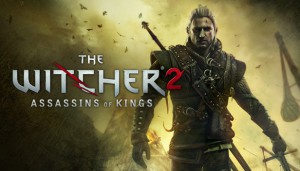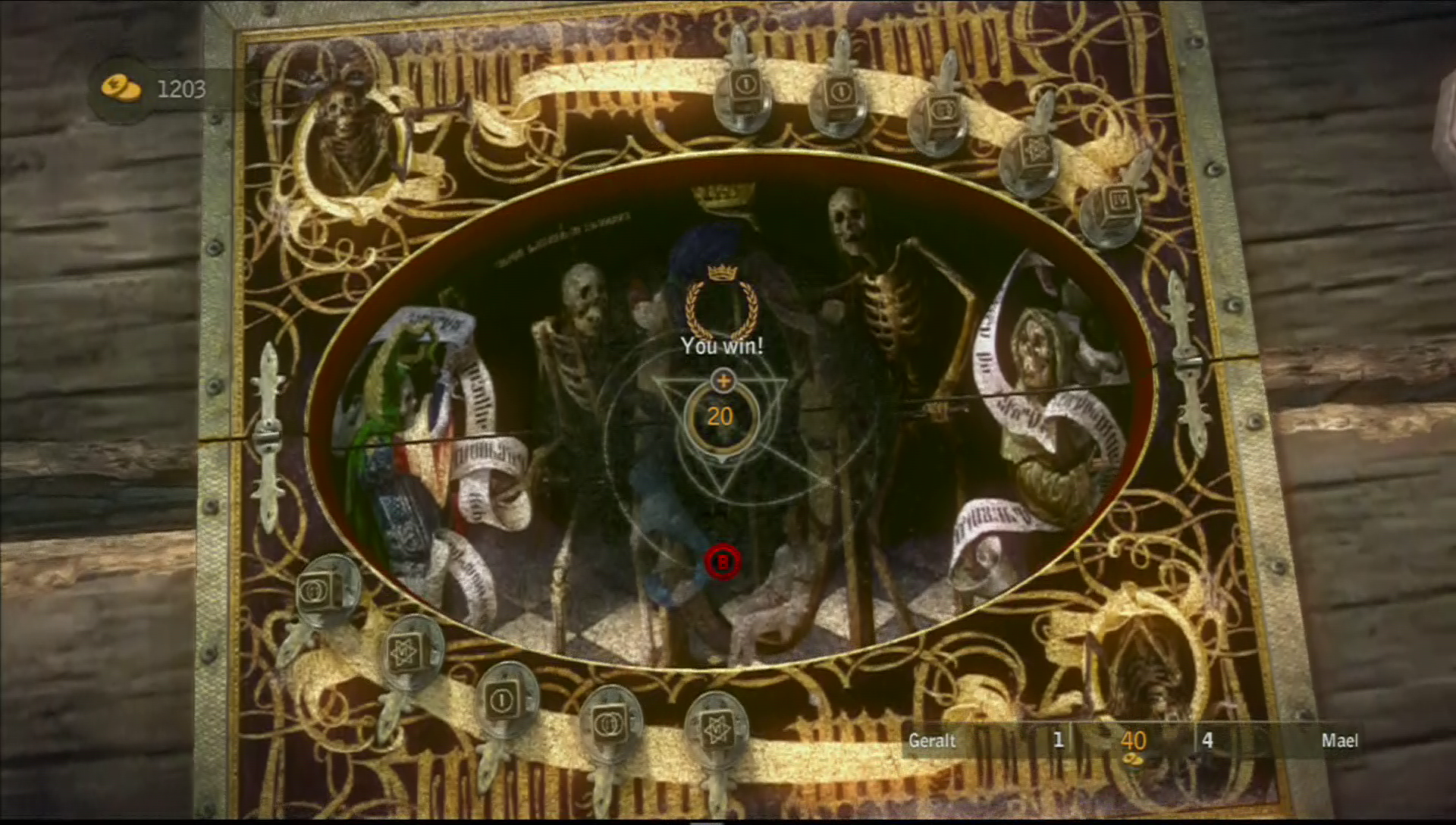The Witcher 2: Five Ways that Dice Poker has a Miserable UI
Ah, minigames in RPGs. There have been a lot of classic minigames over the years that introduce really random tiny games into otherwise unrelated titles. Probably my favorite was the Triple Triad game back in Final Fantasy VIII - a simple collectable card game, but oh-so addicting. Final Fantasy actually has a long history of random minigames that can suck up a lot of your time while not really having anything to do with saving the world.

Gambling minigames are relatively common in any game that has you amassing a fortune. Yakuza 4 might be the king of minigames, and it has no shortage of ways to separate you from your hard-earned cash. But onto business - the most recent game I’ve been playing is The Witcher 2: Assassins of Kings for the XBox 360. It features, among other things, a little dice poker minigame that lets you earn credits (Orens in this game) by beating your friends. For such a simple concept, it somehow manages to get nearly everything wrong. Here are five ways that dice poker in The Witcher 2 has an absolutely terrible interface.
Missing the tutorial
My first beef with the dice poker minigame in The Witcher 2 is the tutorial. Like all good minigames, there needs to be some introduction to get the player up to speed with what’s going on. Unfortunately, this one is completely missable - there’s a character in the opening act of the game that will give the rundown on how to play. At least, that’s what I’ve heard. I missed this guy, and as a result there’s no other way to hear the tutorial. Not even an on-screen “how to play” guide. So here’s usability tip #1: if you’re making up a game within a game, make sure to always include a way for the player to learn the rules. Even if they didn’t miss the tutorial, they may forget.
Why is rolling the dice so important?
The second problem is one of realism. I touched on irritating realism in my article on MLB 2K12 animations, and I’m starting to really dislike realism in games, which is weird. If you’re rolling dice on a board in the real world, there is always a chance that the dice will end up off the board. The developers of The Witcher 2, ever looking to create realism in their world of dragons and magic, made it possible to roll your dice off the board. Let’s be honest for a second: this is ridiculous.
On the XBox 360, the left stick controls where you start the dice from. Then you flick the right stick to roll the dice. Because clearly, this is a super-important control to get right or else gamers just won’t have the full “dice-rolling” experience? As a result here’s an (admittedly exaggerated) example of what could happen to you:
Right, so obviously nobody is going to purposefully drop their dice off the side of the board like that, but there’s also no benefit in letting the player move their dice around before they roll them. Then why is this even a thing that the player can do?
Thankfully, the XBox 360 version starts the player out in the middle of the table, so as long as the left stick doesn’t get moved, it’s pretty likely that the dice will stay on the table (although not guaranteed). The PC version, however, is even worse because of the disorienting camera view. Check out this YouTube video that shows how easy it is to miss the table entirely when using a mouse.
Minigame usability tip #2: don’t make the controls needlessly complex. If rolling dice is way easier in real life than in your game, then you are doing it wrong.
Unnecessarily complicated-looking dice
Third reason why the dice poker is broken: why is it so hard to read the dice? The Witcher 1 had a similar dice game, and it featured standard-looking six sided dice with little dots (pips) on them. In The Witcher 2, the designs are a lot more abstract, and as a result, way harder to read.

It’s not un-decipherable, but when playing on a TV that’s across the room, it’s unnecessarily difficult, and requires a lot more thinking than it should just to figure out what was rolled. And thus, usability tip #3: sure, make it look festive, but not at the expense of easily being able to read and understand what’s going on.
Picking which dice to reroll, not keep
Number 4 is a small one, though important. After one roll of the dice, the player has the ability to re-roll some or all of their dice (see the screenshot above). The player makes this selection though by choosing which dice to re-roll, and each one is highlighted with an orange-ish glow. This seems really backwards - why wouldn’t the player select which ones to keep? In any video poker game that I’ve ever played, it’s always a matter of selecting the good cards, and everything else gets swept away.
I don’t have any hard evidence on this one; it just doesn’t seem in line with how I’m thinking about playing the game. I’m thinking, here are the “good dice” that I need to keep, and as a result those are the ones I want to select. Usability tip #4: think about how the player is going to be viewing the situation, and make sure your logic isn’t backwards. And if other interfaces have a standard way of performing the same action as yours, don’t be that guy and go against the expected norm!
I win…but I’m not sure why
And finally, the last aspect of dice poker on The Witcher 2 that is really irritating. After the two rounds are over, the player is greeted with a simple “you win” or “you lose”, along with the amount of money that was exchanged. What the game doesn’t indicate is why.

The player is left on this screen to try and decipher exactly why they won or lost. As I mentioned, I didn’t see the in-game tutorial, so I’m not sure if it goes over what the order of poker dice hands are or not. Even if it does, I’m sure most gamers aren’t going to have memorized the order - it may be similar to traditional poker, but with dice, it’s not 100% transferable knowledge. That is, assuming you can actually read the dice that are on the screen.
Fixing this problem wouldn’t be hard. A quick text description of what each player ended up with would make it 1000% easier to figure out who the winner was at a glance. The fifth and last usability tip for game developers: don’t make users work backwards to figure out why they won or lost your game - clearly, the game knows, so just put it out there.
Conclusion
The dice poker minigame in The Witcher 2 isn’t really that great. Or even good. It’s at best forgettable. As a way of earning money in-game, it’s not worth your time. And I didn’t even talk about how the gambling isn’t even in your favor since the computer gets the chance to raise, but the player doesn’t.
On top of all that the user interface is, as we’ve discussed, un-necessarily terrible too. The best thing I can think to say about it is that it’s a great example of how not to build a minigame. That’s something, right?